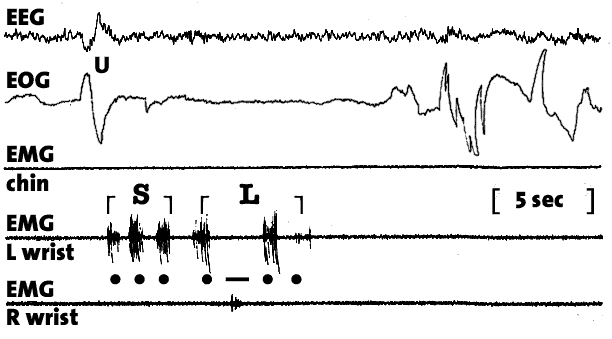Sending EMG signal from dream
Figure 4. Morse code communication from the lucid dream. Evidence of voluntary control of other muscle groups during REM was found by LaBerge, Nagel, Dement, and Zarcone (1981) while testing a variety of lucidity signals. We observed that a sequence of left and right dream-fist clenches resulted in a corresponding sequence of left and right forearm twitches as measured by EMG. Here the subject sends a Morse code signal with left and right fist clenches corresponding to dots and dashes, respectively. Hence the message translates as “SL” (… .-..), the subject's initials. Note that the amplitude of the twitches bore an unreliable relationship to the subjective intensity of the dreamed action. Because all skeletal muscle groups except those that govern eye-movements and breathing are profoundly inhibited during REM sleep, it is to be expected that most muscular responses to dreamed movements will be feeble. Nonetheless, these responses faithfully reflect the motor patterns of the original dream.
Aplications:
- better comunication from dreams
- reconstruction of dream body movement
Posible problems:
- EMG resolution
- too strong muscle atonia
Ideas:
- testing in WILD (REM,SOREM,NEREM)
- find way how to turn off only sensory pathways
- modulation of muscle atonia
Do REM (lucid) dreamed and executed actions share the same neural substrate?
